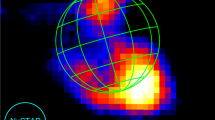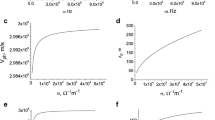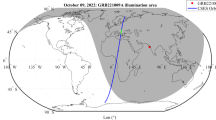Abstract
THE terrestrial atmosphere is bombarded continuously by energetic charged particles of extraterrestrial origin. When a charged particle penetrates deep into the atmosphere, either its direction changes or its speed varies with respect to the local phase velocity of electromagnetic waves. These changes, caused by the dense atmosphere at altitudes of about 90–100 km, generate bremsstrahlung X rays. The flux of atmospheric bremsstrahlung X rays has been measured using balloons1–3, rockets and satellites4,5. Measurement of the atmospheric X-ray flux has become routine in the study of electron flux precipitation into the lower ionosphere6,7. The degree of polarisation of emitted radiation changes rather drastically with the changing energy of precipitating electrons and with the height of precipitation. But no effort has yet been made to measure the polarisation of atmospheric bremsstrahlung. We here show the potential importance of bremsstrahlung X-ray polarisation and its probable role in atmospheric diagnostics.
This is a preview of subscription content, access via your institution
Access options
Subscribe to this journal
Receive 51 print issues and online access
$199.00 per year
only $3.90 per issue
Buy this article
- Purchase on Springer Link
- Instant access to full article PDF
Prices may be subject to local taxes which are calculated during checkout
Similar content being viewed by others
References
Barcus, J. R., and Rosenberg, T. J., J. geophys. Res., 71, 803–823 (1966).
Anderson, K. A., in Airglow and Aurora (edit. by McCormac, B. M.) 249–263 (Van Nostrand Reinhold, New York, 1967).
Brown, R. R., Space Sci. Rev., V, 311–387 (1966).
Chase, L. M., J. geophys. Res., 73, 3469–3476 (1968).
Anderson, K. A., Chase, L. M., Hudson, H. S., Lampton, M., Milton, D. W., and Parks, G. K., J. geophys. Res., 71, 4617–4629 (1966).
Christensen, A. B., and Karas, R., J. geophys. Res., 75, 4266–4278 (1970).
Bailey, D. K., Brown, R. R., and Rees, M. H., J. atmos. terr. Phys., 32, 149–169 (1970).
Kirkpatrick, P., and Wiedmann, L., Phys. Rev., 67, 321–339 (1945).
Prasad, R. Y., and Singh, R. N., Annls Geophys., 28, 593–605 (1972).
Rausaria, R. R., and Singh, R. N., Planet. Space Sci. (in the press).
Author information
Authors and Affiliations
Rights and permissions
About this article
Cite this article
RAUSARIA, R., SINGH, R. Polarisation of atmospheric bremsstrahlung. Nature 253, 28–29 (1975). https://doi.org/10.1038/253028a0
Received:
Revised:
Issue Date:
DOI: https://doi.org/10.1038/253028a0
Comments
By submitting a comment you agree to abide by our Terms and Community Guidelines. If you find something abusive or that does not comply with our terms or guidelines please flag it as inappropriate.



